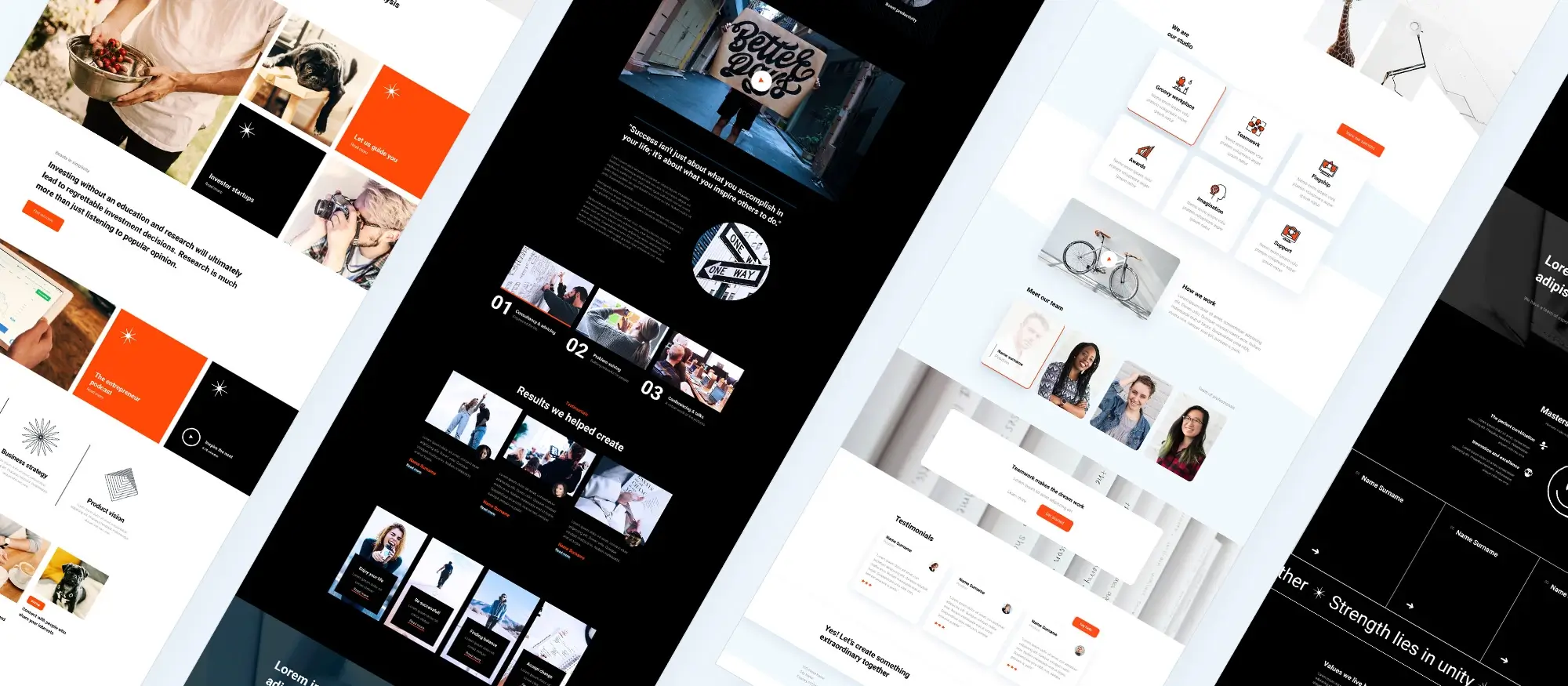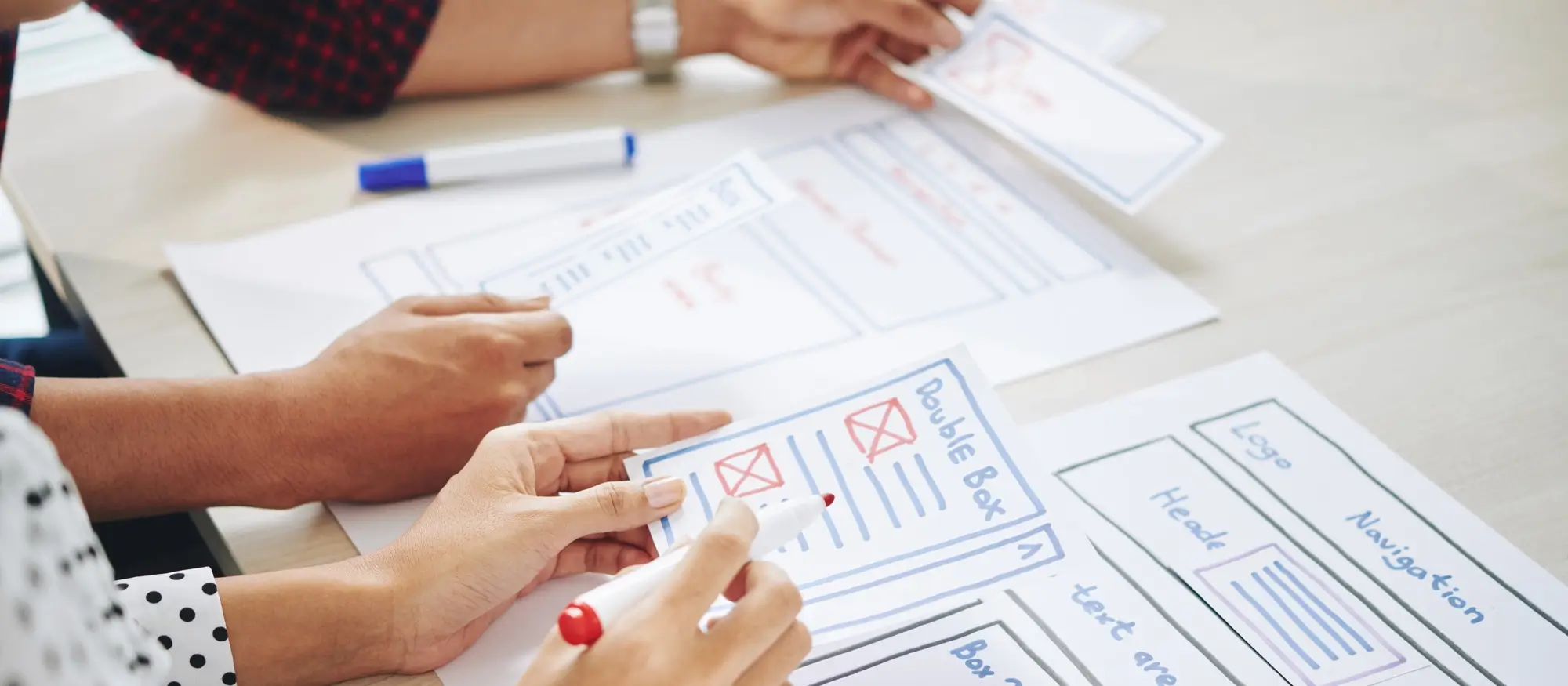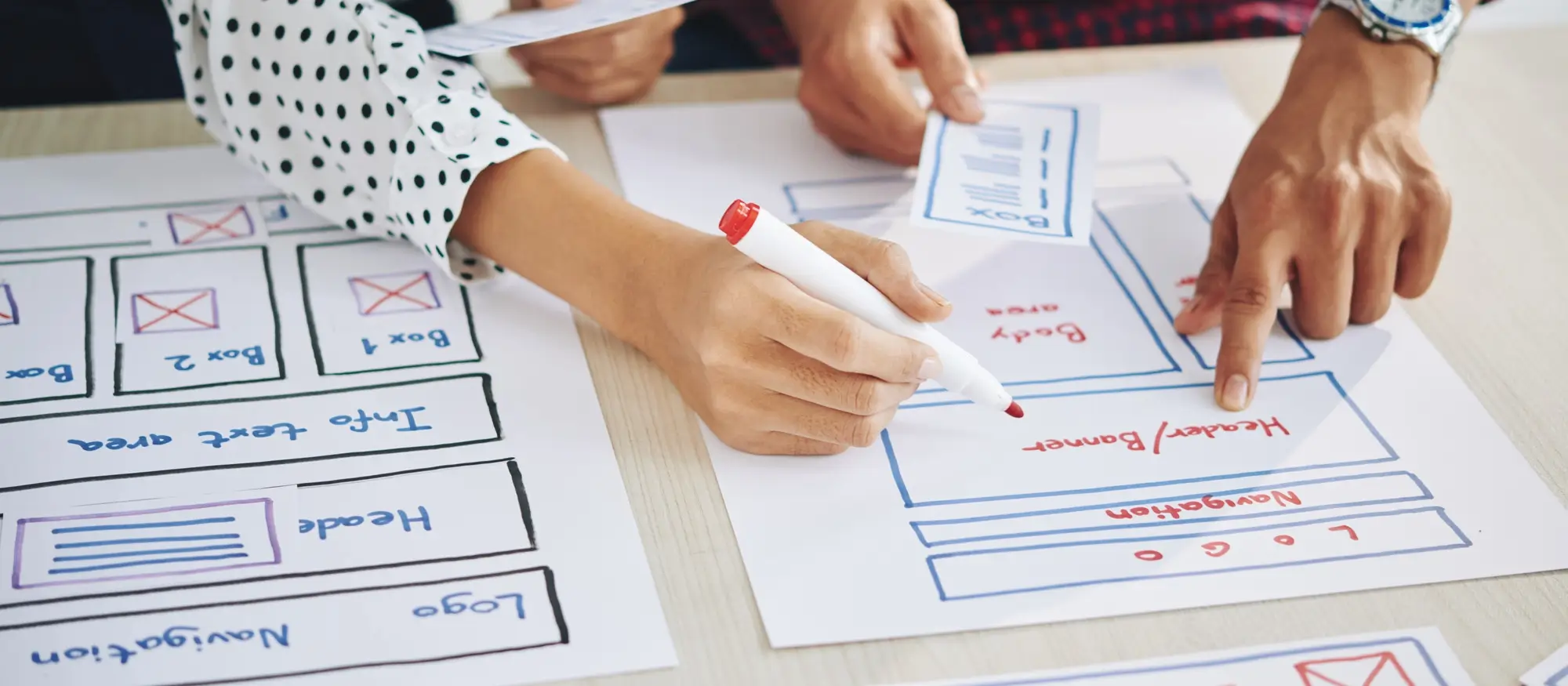How much does a WordPress website design cost?
Try MaxiBlocks for free with 500+ library assets including basic templates. No account required. Free WordPress page builder, theme and updates included.

Updated 15th May 2025
What determines the cost of a WordPress website
Understanding the factors that influence your budget
When planning a WordPress website, the total cost depends on more than just the hourly rate. WordPress is flexible and widely used, but what you pay will vary based on several key elements. Knowing what these are can help you budget more effectively and avoid surprises later in the process.
Scope of the website and how it affects pricing
The size and functionality of your site have a major impact on cost. A small site with a few standard pages will usually be more affordable than a large site with custom features. If your project includes elements like interactive tools or advanced search functions, expect the price to increase. Clearly defining your requirements at the start will help you stay on track and within budget.
Choosing between custom design and templates
The type of design you choose also affects the final price. A custom design is made to match your specific goals and gives your site a unique look, but it tends to cost more. Pre-designed templates are more budget-friendly but may require adjustments to suit your brand. Deciding between the two depends on how much flexibility and personalisation you need.
Freelance designer or design agency
Who you hire will also influence cost. Design agencies often charge more due to their larger teams and broader service offerings. Freelancers may offer lower rates and a more personal working relationship, but they might have limited capacity or fewer services. Think about the level of support you need and whether your project benefits more from a team or an individual.
Why location makes a difference in cost
A designer’s geographic location can also shape their pricing. Those based in high-cost cities or countries usually charge more to match the local market. While hiring someone from a different region may save money, consider how factors like communication style, time zones, and language might affect the process. Balancing cost with reliability is key to a successful outcome.

How design choices and experience shape WordPress website costs
Why experience and reputation influence pricing
A designer’s level of experience and professional reputation are key factors in how much they charge. Designers with a strong portfolio and consistent client praise often set higher rates because their work speaks for itself. Investing in someone with a proven track record can lead to a more effective and polished website, especially if quality and performance are important to you.
Customisation and its impact on your budget
The amount of custom work your site requires will directly affect the cost. Making simple adjustments to an existing theme is usually more affordable. On the other hand, fully custom design elements or features built from scratch require more time and expertise, which increases the overall price. Be clear about how much tailoring your site needs from the beginning to avoid unexpected costs.
Revisions, updates, and long-term changes
Most designers include a limited number of revisions in their pricing. If you request more changes than agreed, additional costs may apply. Clarifying how many revisions are covered before work begins will help you avoid confusion. You should also think about future updates and site maintenance, which can be ongoing expenses depending on your agreement with the designer.
How added features and tools raise costs
Additional functionality, such as online shopping, member areas, or appointment booking, can add significantly to the cost of your website. These features often require extra development and testing. If your site needs to connect with third-party tools or services, that integration work will also increase the budget. Make sure to prioritise essential features and discuss them early with your designer to understand how they’ll affect the total cost.
Subscribe to our newsletter
Key elements that influence the total cost of a WordPress website
Content creation and its role in your budget
The quality of your website’s content both text and visuals has a direct impact on cost. Hiring professionals to create content can lead to a polished result, but it will increase your overall expenses. If you choose to supply your own content, you may save money, though it often requires extra time and planning. It’s important to decide early on who will be responsible for content and how it fits into your timeline and budget.
Including SEO in your design process
Search engine optimisation (SEO) is an important consideration if you want your site to rank well in search results. Adding SEO services during the design stage involves extra work, such as keyword research, content adjustments, and technical improvements. These services can increase the total cost, but they also help ensure that your site performs well in search engines. Deciding whether SEO is a priority will help you set the right budget from the start.
Designing for mobile responsiveness
With more people browsing on phones and tablets, a responsive website is no longer optional. Creating a design that adapts to various screen sizes can involve additional development time and may raise the cost. However, investing in mobile responsiveness improves usability and can positively affect your search rankings and overall user satisfaction.
Ongoing costs of hosting and domain registration
While design and development are one-time expenses, hosting and domain registration come with recurring fees. These services are essential for keeping your website online and accessible. Initial setup fees and annual renewal charges vary by provider, so it’s wise to research your options and include them in your long-term budget plan.

Ongoing factors that shape the cost of a WordPress website
The importance of maintenance and support
Once your website goes live, regular maintenance keeps it performing well. Tasks like software updates, security checks, and resolving issues are essential to avoid downtime and potential problems. Many designers offer ongoing support or maintenance packages, which can spread out costs and provide peace of mind. Including this in your budget helps ensure your site remains functional and secure over time.
Considering accessibility in your website design
Making your website accessible to all users, including those with disabilities, may involve extra design and development work. This can include features such as keyboard navigation, screen reader support, and image alt text. While this can add to the cost, accessibility improves user experience for a wider audience and may also help you meet legal standards depending on your location or industry.
Why security is a necessary investment
Security should be a core part of your website planning. Protecting your site with tools like SSL certificates, regular backups, and firewalls helps guard against data breaches and cyberattacks. These features often come with additional costs, but they are essential to protect both your site and its visitors. Discuss what security measures are included with your designer and factor them into your total project cost.
Optimising for speed and performance
A fast, responsive website improves user experience and supports better search rankings. Speed optimisation involves tasks such as image compression, reducing code bloat, and selecting the right hosting environment. These adjustments can require extra development time or specialised tools, which may increase the overall cost. However, the benefit is a smoother, more engaging website for your visitors.
Build like a pro
Final considerations that shape your WordPress website cost
How design complexity and originality affect pricing
The more unique and detailed your website design is, the more it’s likely to cost. Custom graphics, tailored layouts, and animations require additional time and technical skill, which increases the final price. Simpler designs with fewer custom elements are usually more affordable. Consider how much originality your brand requires and how that fits within your budget.
The added cost of e-commerce features
Including e-commerce functionality in your site brings extra development work. Setting up payment gateways, managing products, and handling customer accounts all add to the project scope. The more complex your online store, the higher the cost is likely to be. It’s essential to clearly define what your shop needs and talk it through with your designer to get an accurate quote.
Meeting legal and compliance standards
To protect your business and meet regulations, your website should include legal content such as privacy policies and terms of service. Depending on your industry or location, there may also be other compliance requirements to address. These additions can increase costs slightly, but they are important for protecting your business and building trust with users.
Managing your budget with flexibility
Setting a clear budget from the start helps you make better decisions throughout the project. Be honest about what you can spend, and leave room for unexpected costs such as added features or adjustments. A flexible, well-planned budget supports a smoother design process and helps you achieve a result that delivers long-term value.

How much does a WordPress website design cost?
When it comes to designing a WordPress website, there are several factors that influence the overall cost. From choosing a theme to customising it for your needs, costs can vary significantly depending on your goals and requirements. Whether you’re building a personal blog or a large-scale business site, understanding the breakdown of potential costs can help you plan your budget effectively.
Key factors influencing WordPress website design costs
Several elements determine the cost of a WordPress website design. These include:
- Theme choice – You can choose from free themes or premium options like MaxiBlocks, which offer advanced features and flexibility for customisation. While free themes are great for small personal sites, premium themes often provide better support and more robust functionality.
- Design customisation – Customising a theme can involve either basic adjustments or a full redesign, which may require hiring a web designer. The complexity of customisation will influence the total cost.
- Plugins and functionality – If you need additional features, you may need to invest in plugins like MaxiBlocks, which offer enhanced design elements and layout options. Some plugins are free, while others are paid, adding to your overall costs.
- Developer or designer fees – If you hire a professional to build your site, expect to pay for their time and expertise. Developer and designer rates can vary, depending on their experience and the complexity of the project.
- Ongoing maintenance – A website requires regular updates and maintenance, which might involve additional costs for security, backups, and updates to themes and plugins.
Final thoughts and key takeaways
Designing a WordPress website can cost anywhere from £200 to several thousand pounds, depending on the complexity and features of your site. Choosing between free and premium themes like MaxiBlocks and deciding whether you need professional help can significantly impact your final cost. Remember to consider not just the initial design, but also the ongoing costs of maintenance and functionality updates.
Whether you’re starting small or building a comprehensive site, careful planning and budgeting will help you achieve the best results for your investment. If you’re looking for a flexible, easy-to-use theme, exploring MaxiBlocks might be a great starting point to design a site that meets your needs.
Expert WordPress web design and ongoing support
When building or scaling your WordPress website, it’s essential to choose a WordPress web design company, studio, or agency that can deliver on both creative design and technical support. Look for teams that offer not only WordPress design services but also ongoing WordPress support and reliable WordPress maintenance to keep your site secure and up to date. Exploring the best WordPress design examples can help guide your vision, while tools like WordPress plugins enhance site functionality. For those seeking seamless performance, selecting the best website hosting for WordPress is just as important. If you’re navigating this process, the WordPress website designer guide is a great starting point. And once your site is live, take it further by learning how to optimise WordPress SEO, integrate Google Analytics with WordPress, and continue optimising WordPress for performance and visibility.
Discover tools and layouts used by the best web designers
Explore expert tips, tools, and creative examples that define today’s best web designers.
FAQs – WordPress website design cost
What factors influence the cost of a WordPress website design?
The cost of a WordPress website design can vary depending on several factors such as the complexity of the site, the number of pages, the features required, whether a custom theme is needed, and the experience of the designer or agency.
Is there a standard price range for WordPress website design?
There is no fixed price, but basic websites can start from a few hundred pounds, while more advanced or custom-designed sites can range from several thousand pounds depending on the project scope.
Does the cost include website hosting and domain?
Typically, the design cost does not include hosting and domain fees. These are usually separate costs that the client must cover, either through the designer or a third-party provider.
Are there ongoing costs after the design is completed?
Yes, there can be ongoing costs for things such as hosting, security, maintenance, plugin updates, and content management, depending on your arrangement with the designer or agency.
Can I design a WordPress site myself to save money?
Yes, WordPress is user-friendly and offers many free or low-cost themes and plugins. However, a professional design can save time and offer better results for branding and user experience.
Is it more expensive to have an e-commerce WordPress site?
Yes, e-commerce websites often require additional functionality such as payment gateways, product listings, and customer account systems, which typically make them more expensive than standard brochure websites.
How long does it take to design a WordPress website?
The timeframe can range from a few days for a simple site to several weeks or months for a complex or custom-designed website. Timelines can also be affected by client feedback and revisions.
Can I update the website myself after it is designed?
Yes, one of the advantages of WordPress is that it offers a user-friendly admin panel, allowing you to make updates and manage content without needing technical skills.
Do I need a custom theme or can I use a pre-made one?
You can use a pre-made theme to reduce costs, but a custom theme can offer a unique design tailored to your brand and functionality needs. The choice depends on your budget and goals.
What should I look for in a WordPress designer?
Look for someone with a strong portfolio, positive client reviews, a clear design process, and good communication skills. Make sure they understand your business goals and can deliver on your vision.
WordPress itself
Official Website
wordpress.org – This is the official website for WordPress, where you can download the software, find documentation, and learn more about using it.
WordPress Codex
codex.wordpress.org/Main_Page – This is a comprehensive documentation resource for WordPress, covering everything from installation and configuration to specific functionality and troubleshooting.
WordPress Theme Directory
wordpress.org/themes – The official WordPress theme directory is a great place to find free and premium WordPress themes. You can browse themes by category, feature, and popularity.
maxiblocks.com/go/help-desk
maxiblocks.com/pro-library
www.youtube.com/@maxiblocks
twitter.com/maxiblocks
linkedin.com/company/maxi-blocks
github.com/orgs/maxi-blocks
wordpress.org/plugins/maxi-blocks

Kyra Pieterse
Author
Kyra is the co-founder and creative lead of MaxiBlocks, an open-source page builder for WordPress Gutenberg.
You may also like

